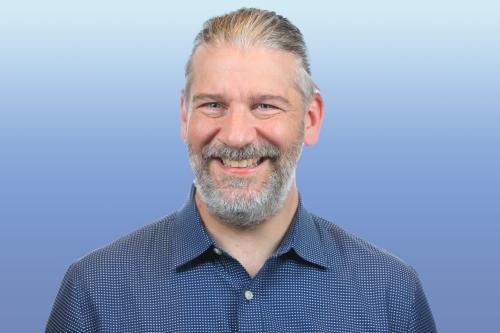Leadership, Engagement, and Open Standards
Letter from the Executive Director, June 2023
If you’ve been doing something for long enough, you start to reflect on how and why the structures you operate within came to be. Earlier this year, I read a fascinating book about the development of the ecosystem of consensus standards organizations. The book was particularly focused on the telecommunications industry and open standards development. Written in 2014 by Andrew Russell, Open Standards and the Digital Age describes how companies, industries, and national policies interacted to form the standards ecosystems we have today. While telecommunications isn’t the same as content creation or library services, there has been increasing convergence and influence on the two domains. Reflecting on this ecosystem and NISO’s role in its development, as well as the implications for our collective futures, has provided a valuable long-term lens for me as we prepare our next iteration of NISO’s strategic plan.
Few standards bodies can enforce compliance with their recommendations, and this tension is core to the consensus standards process we have today. In addition, the interplay of various bodies in creating guidance for adjacent or overlapping communities can lead to confusion in terms of overlapping and occasionally duplicative standards efforts. When people approach me about various ideas for projects or opportunities NISO could pursue, the ecosystem and the players are always important to consider in determining whether NISO is the right home or with whom we should partner to accomplish a goal. Sometimes we are the right place, sometimes not. Also, as we’re considering opportunities for organizational growth, these issues inform our planning process. Another aspect is how we can use our current engagement channels in our worldwide community.
Engaging in international standards development work is a key part of the work at NISO. While there are important differences in how content is created, shared, managed, and preserved around the world, we all rely on many of the same core elements and features. Most publishers, vendors, and suppliers work in an international marketplace, and consistency in approach is critical to creating and sustaining a worldwide market for products and services. And with the platforms for digital distribution existing in an international network, worldwide interoperability becomes increasingly critical.
For the first time since the pandemic, the Technical Committee of ISO that’s focused on Information and Documentation (ISO/TC46) gathered in person. At the kind invitation of AFNOR, the French national standards-setting body, we met in Paris for a week of working group and subcommittee plenary meetings. This has always been one of the busiest and most intense weeks for those NISO staff who attend, because we serve as the primary US representatives and points of contact for all of the TC46 work. This means we are bouncing between various working groups, coordination discussions, and plenary meetings for the entire week.
There are many forums where standards are created and adopted, NISO being just one. Some of the standards we develop are written intentionally for a worldwide audience, but try as we might, we can’t get feedback from all of the impacted communities around the world. To be sure, this is true of many other organizations, not just NISO. As complicated and bureaucratic as the ISO process can be, it does provide a structure by which we can engage internationally on a level playing field, where ideas can be vetted, shared, and iteratively improved. It also provides a mechanism to gather and respond to feedback from worldwide communities of experts. As our community expands and grows, this forum and process is increasingly valuable.
Similarly, the ecosystem of library systems has grown, changed, and morphed. Last month, I had the opportunity to speak with Marshall Breeding about that ecosystem and the trends that have impacted and continue to shape it. Following the release of his annual Library Systems Report in American Libraries, we discussed how this one segment of our market has changed and is reacting to new developments, such as numerous open source projects and the implementation of BIBFRAME. We’ve released this conversation as a first experiment in new forms of content and educational materials sharing with you all. In the coming months, we are planning to release more of these multimedia resources. Hopefully, you will find them interesting and informative.
A clearer understanding of where we have come from can inform us about the best directions to head into in the future. The NISO strategic plan, which has been in place for three years and is being reviewed and adapted by the NISO Board of Directors, has included thought leadership. Core to this are our educational events and the discussions we can foster, like the one with Marshall Breeding. We also seek to foster discussions in the community. This is why we’re continuing to engage in discussion forums like the NISO Plus Forum that we’ve announced for October, as well as the NISO Plus conference, which will be returning to Baltimore for a revival of the in-person experience we hosted in 2020.
There are a variety of ways in which we engage and serve our community at a range of levels from the individual level, to local, organizational, national, and even international. This could be in understanding how specifications are adopted locally, or representing US national interests in an international forum, like ISO. For many, it isn’t always obvious how these levels interact and influence each other, but this connectedness has always been a core feature of this ecosystem.
Sincerely,
Todd Carpenter
Executive Director, NISO
